This article is my intellectual property and is copyrighted
The images sourced are available on line and I am grateful for the opportunity to enhance my article with them. Should there be any objection to my use of them I would be grateful if you could let me know.
This original article has been published in excerpts which I have elaborated and are part of a 4 or 5 series of installments in Mosaic Magazine from Winter 2014
I am recollecting anecdotal information gleaned from Egyptians, musicians and friends who know about /have attended these ceremonies: If you are really fortunate and know the right people you might get invited to a Zaar ceremony. This is a female only occasion and is private. Ceremony is observed – ritual ablutions and purification -this includes use of incense (commonly Frankincense). The space is consecrated and a Sheikha presides.
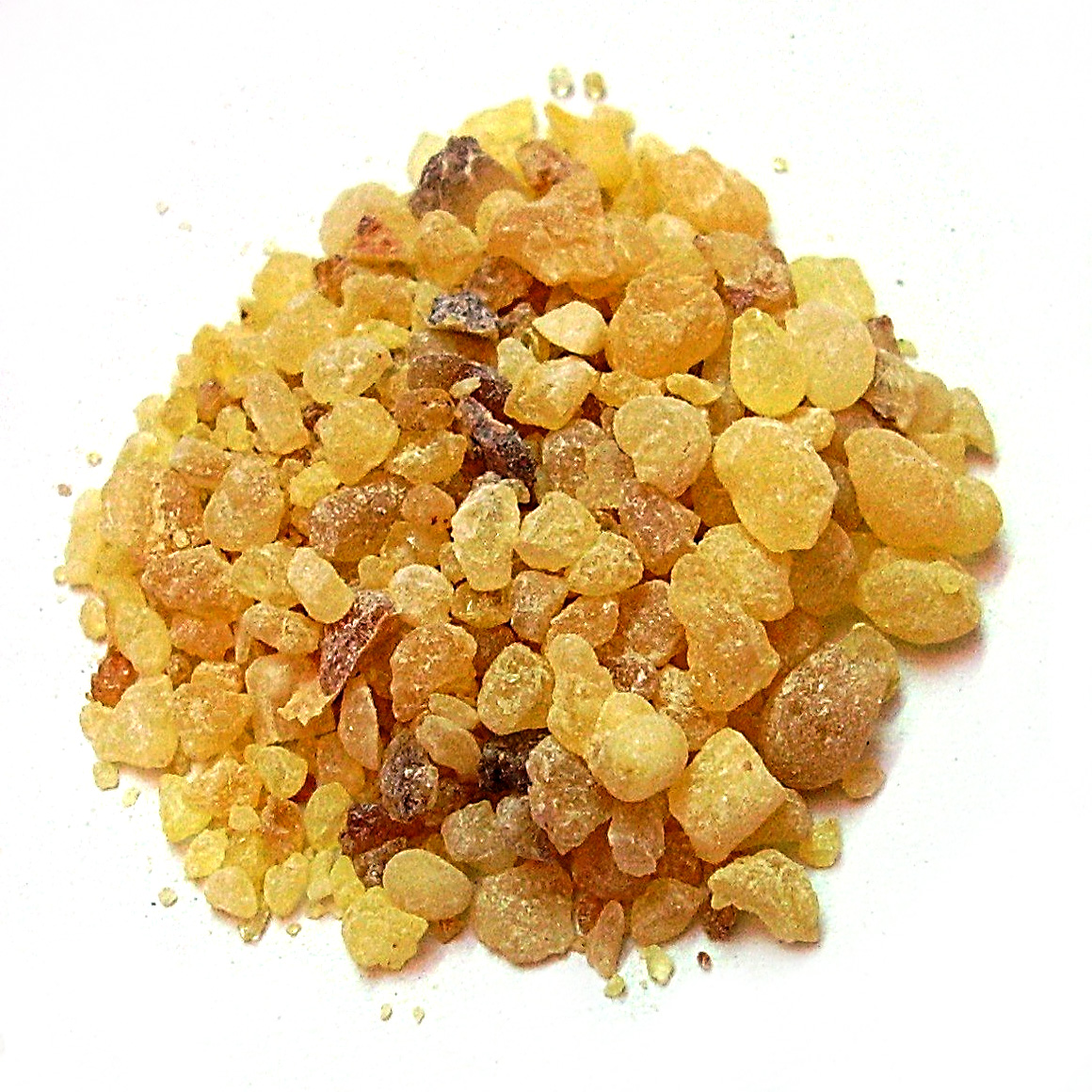
I am not writing from the perspective of being “an expert”. I am sharing what I have learned on my own personal journey and I hope it proves of merit or at least interest. Do feel free to expound your own views and share anything relevant that might provide further insight.
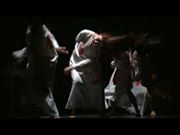
The Ceremony
Careful examination is made of the person “suffering” from possession beforehand. Traits of possession are investigated:
Unusual behaviour which reveals the Djinn(s) is identified
Eg does it encourage smoking/drinking/swearing for example
All this enables the Sheikha to know and how to deal with and remove the entity. This is achieved by using the Zaar rhythm and invocations/incantations/banishments to remove it.
It is not uncommon for the woman to be possessed on other occasions
in the future either - ostensibly by “lesser “entities.
During the ceremony I was told about, the victim was upstairs whilst the ceremony was opened. Musicians would play (drummers and maybe a flute player). Relatives of the afflicted and certain guests would begin in a space that had been made safe (prayers, incense, cleaning and ritual objects) beforehand. Ladies would get up and start swaying when the desire took hold of them.
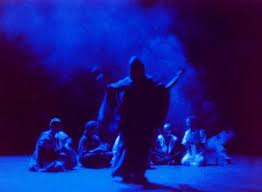
As the tempo and group consciousness/collective desire had been reached with accompanying intensity of cadence and rhythm the victim was brought downstairs. She began to dance as the rhythm to banish her particular Djinn was played for it could not resist. This the Sheikha would know….. Succumbing to an increasing frenzy of movement, during which she might scream, wail and resist, foam at the mouth, and rip at/remove her clothing, she would eventually collapse. Standing over her the Sheikha would command the entity to leave with ritual prayer and commands and exhort it/them to “Begone”
Satisfied that this had been accomplished the victim who would by then be stupefied/in a state of trance, the supporting women would stroke her hair and face, washing her and soothing her and helping her to “come back” safely.
All this could take several hours
A sacrifice could or would also be made eg goat/chicken depending on the budget.
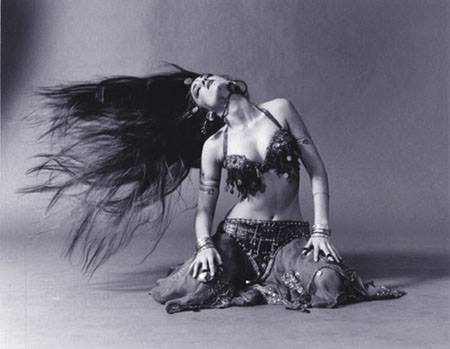
Roots
The Arabic word Zaar is believed to be of Amharic origin. Suspected to have originated in Ethiopia and introduced to Egypt and Sudan from slaves. It was a ritual to counteract the evil eye from demons/and bad spirits from their superstitious victims. There are 2 kinds of spirits Djinns (evil) and Sayids (who are more appeasable).
I have African friends who have seen Zaar dance and have recognised it as part of their culture, and indeed the Sudanese Voodoo Group “Rango” are practitioners of the Zaar. Complete with their own Sheikha- who with incense, pronounced incantations and prayers prior to the group performing it in London a few years ago (by promoters 30ips).
Musical Practitioners of Zaar wear goat hooves around their waist (for percussion), long has the Devil been represented as a Goat.
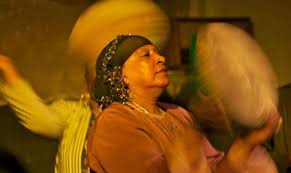
Catharsis and Culture
It must be borne in mind that women who do not have our western freedoms are/can be disempowered and would naturally build up some frustration. There are very few outlets for them to freely express their will/their power to act. Particularly if this is denied to them, and they are subjugated to the will of their father/brother/husband/male relatives.
And so in a way the Zaar enables them to be released even temporarily from their pain and suffering. It can offer catharsis and be extremely therapeutic. My twin who lived in Saudi Arabia for a long time expounded on this theme with many stories. Indeed the book listed below and other links also illuminate this.
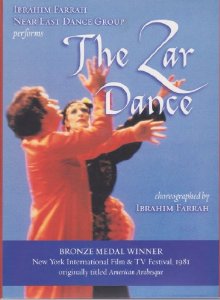
Translation
I sat with Sheikh Taha –at the time in his early 70s- and we talked about Zaar and he translated the Zaar music I was given when I was a student of the Suraya Hilal School of Raqs Sharqi (around 1990 or so). I made copious notes which I have mislaid but this is what I recall:
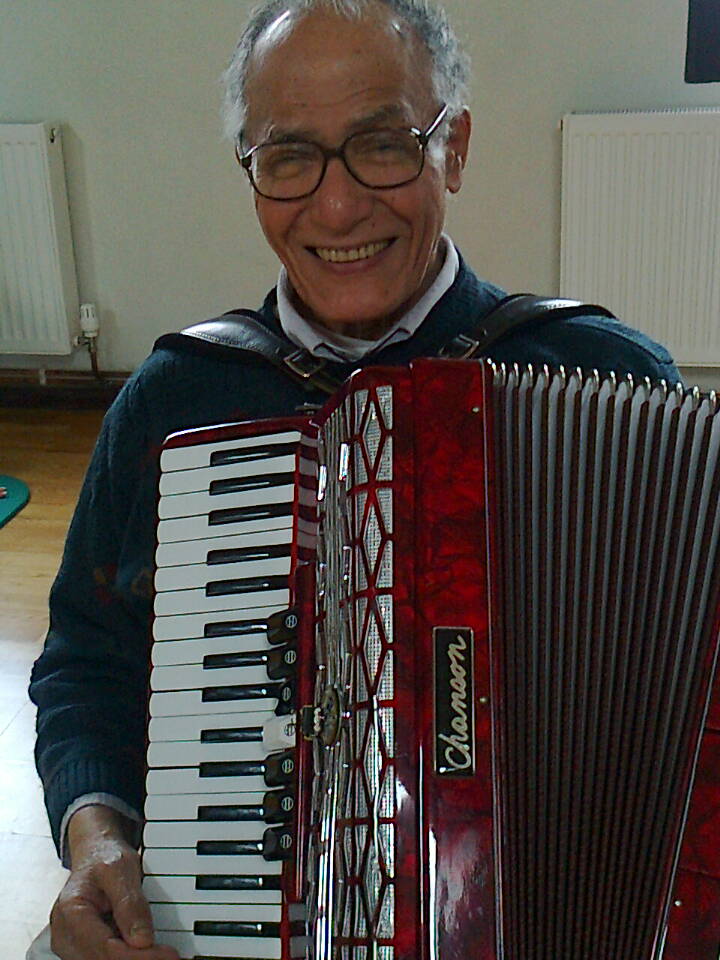
As soon as he heard it (and it took several hours to translate 30 minutes of it) he recalled in his youth how common it had been and how he had played at one. He remarked how it had fallen in use and had been declining in the last 50 years or so (circa the 1960s). This was a result of westernising/modernising and sons choosing not to follow their musician father's traditions.
Consequently as a result the real practitioners of it would have declined. Listening to it he said that it sounded like it was recorded at a party where the band were improvising and may well not have remembered all the words as some of it made no sense to him . Again he said this was not unusual. But there were elements that he recalled in there too-as part of Zaar rituals
Identified words:
Asmar – Black- masculine (a polite and deferential term compared to the word aswad)
Calling upon the dark skinned one (host of the party or possibly a Djinn
Baba Asmar – the Black father.
When I first heard this I thought it must be Sudanese music as God would have been perceived as being Black. Taha told me it could have just been that the man who was hosting the part the song was recorded at was black and it was an honorary nod to the patron of the party. Then I was told that this was the name of a Djinn from an Egyptian whose Aunt was a Sheikha and led Zaars.
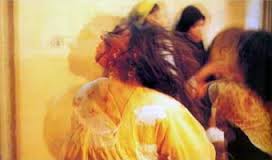
Ya Sultan – the Sultan
Ennobling the patron of the Party according to Taha
Or part of the Djinn hierarchy that may have been evoked
Maybe even the “original Father” ie The Pharoah himself
Ochti Maghrebiya - Moroccan sister
This could have been a reference to a Moroccan lady who was at the party that Taha mentioned.
Morroco has a reputation amongst the Arabs for being "the most active and with the worst reputation for the dark arts". .It could be connected
So it could be a female Moroccan Djinn
Ochti Sultan -Sister to the Sultan
Or more likely related to the hierarchical Djinn
It made mention of her wearing a blue dress.
Spirits/Djinns are associated with different colours.
Blue Djinns are associated with intelligence.
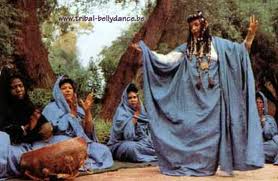
The Guedra dance from Morocco is associated with blessings, healing and love and are known as “blue people”
Source
I would like to thank the legendary Aunty Rocky for providing some insight to the “Moroccan Sister” I quote:
“The Moroccan "sister" mentioned in that ritual was possibly the notorious Aisha Quandisha “.
http://de.wikipedia.org/wiki/Aisha_Qandisha
http://www.essaouira.nu/culture_djinns.htm
http://aichaqandisha.blogspot.co.uk/2007/11/who-is-aicha-qandisha.html
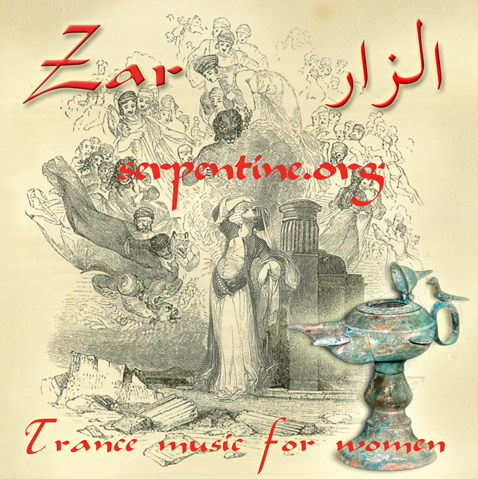
Faris el Baghdad
This is a legendary Hero (Knight) from Baghad.
This could have been included as a tribute to the “Sultan” at the party.
Or an Iraqi of note could have been there. Or it could have been drawing upon the Great Story telling legends honouring and glorifying the Arab races
Link to a song of this name with strong devotional overtones
http://www.yala.fm/en/artists/samir-aguerbi/albums/al-hadra-vol-1/tracks/11-fares-baghdad/e80f21a8d607113c3a3de090fc1a0686
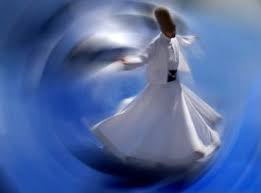
Faris el Hadra
The Hadra is a Sufic ceremony. A gathering of worshippers who will chant, sing, praise Allah and maybe whirl. Sufism is the mystical branch of Islam and the dancers associated with it are Whirling Dervishes
Definition of Hadra
http://www.islamicity.com/forum/pr
this link was since removed. I have left it for reference in case it "re-appears"
Information on Hadra
Video clip of a Hadra
.jpg)
Sufis and Dhikr (Zikr)
http://egyptiancentermakan.wordpress.com/sufi-zikr/
http://www.touregypt.net/featurestories/dervish.htm
You might want to read this account from which the above image was taken (translate it into "your" language )
See the clip above from the same website
In this Zaar people are summoned and called to the Hadra, reference is made to Faris el Hadra as well as to the Sheikh el Hadra. The religious leader who presides over the Hadra
Kahil al ain –kohl around the eyes
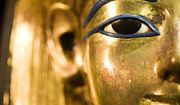
This could be referencing kohl in its medicinal sense protecting the eyes (as in sandy deserts this would be a necessity). Also it was believed to protect eyes from solar rays and also to ward of the evil eye. This dates back to Pharonic times
Also there are amulets all around the Medierranean sea to ward of the evil eye. See images here

Amber on the skin this was also mentioned in the song
The properties of Amber include: Healing, it is an antiseptic, it rejuvenates, and amulets of it were worn to yield protection. Amber was part of Ancient Egyptian life and it was believed to have magical properties, guaranteeing victory, energy and fortune.. It ennobled, adorned, embellished its wearer and glorified him. It is connected with Osirian legend (Osiris -the God who was resurrected ie brought back)
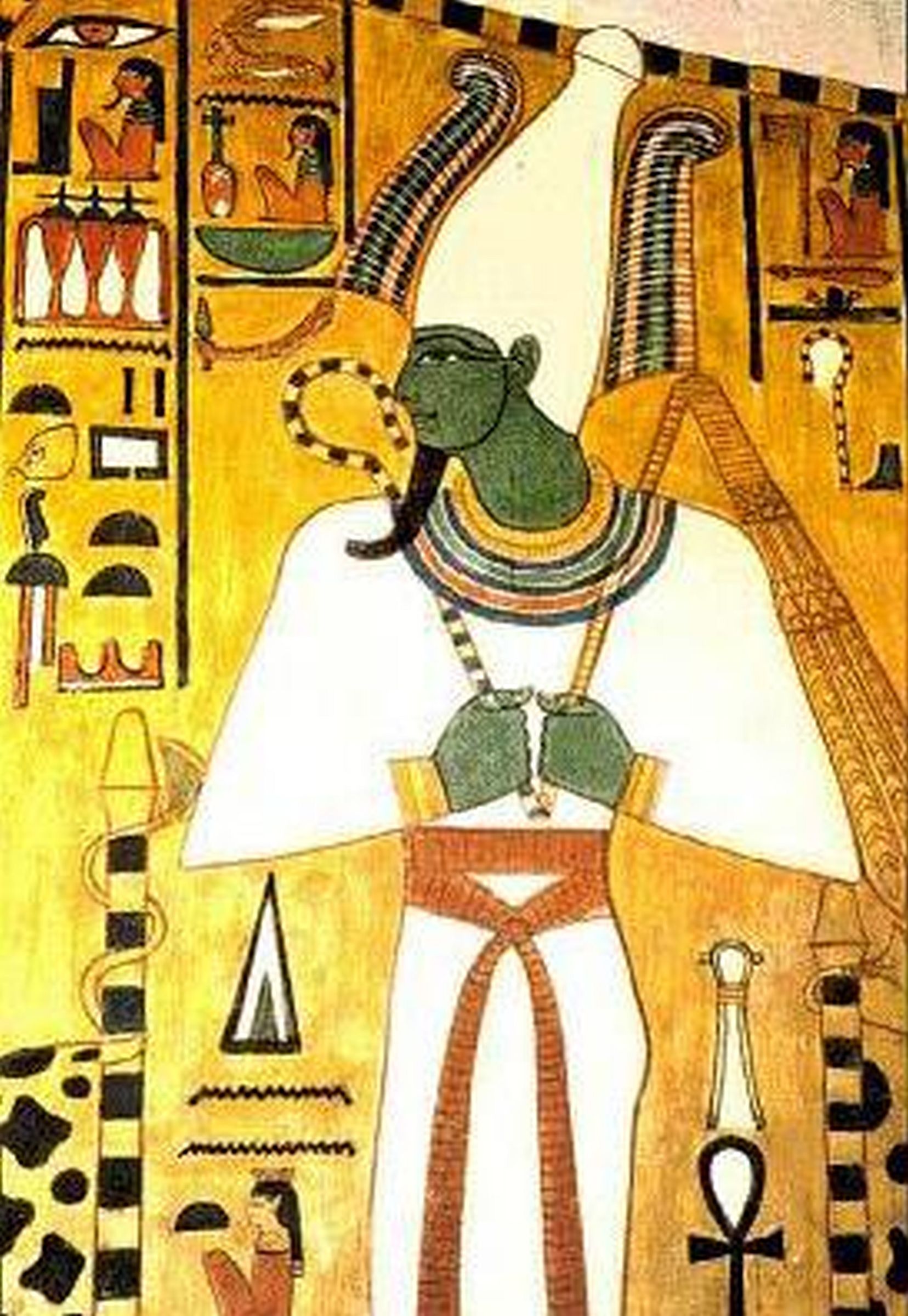
A friend who trained in Ancient Egyptian mysteries also commented that it was connected to “Deifying” the Pharoah (who was God's instrument of earth and the Protector of his people).
Or it could literally be referring to sun burned skins which Middle eastern people would have. Or perhaps a darker skinned person at the party was being flattered?
Summary
My thoughts are that it could well have been played as an improvisation at the party: several of those in attendance were acknowledged by the band as a courtesy. The band would be gaining more tips -as it is common and expected on both sides) to glorify the Patrons at the party and be rewarded for doing so.
But this is also mystical and ritual re-enactment with references that have been lost in time. Sadly there has been very little research in Egypt (that I am aware of save by those that were visiting/have an interest).
There does appear to be a connection to the Djinns and most certainly a few commonalities with ancient religious practices and rituals…..the Zaar is found in Egypt, Sudan, Somalia and in Iran.
There is also a footprint elsewhere of similar rituals with a cathartic aim:
Morocco the Gnawa http://www.penn.museum/documents/publications/expedition/PDFs/46-1/Moroccan%20Gnawa.pdf
Italy Tarantism
https://www.youtube.com/watch?v=igUTPVPdA-E
Brazil Candomble
http://en.wikipedia.org/wiki/Candombl%C3%A9
Zaar and belly dance
You will see several links below on the Zaar from notable and respected sources – e Magazines
The Gilded Serpent
Habibi Magazine and
Shira
All of
which I recommended reading.
A stylised form of Zaar is depicted in performance but the real thing is something altogether very different. It is not deemed appropriate to perform the “real thing” in public
I have been in the audience in Theatre shows where respectable Arabs (with their families in tow) have walked out as soon as the Zaar rhythm was heard at a major London venue. It is considered low class
Teachers are careful when they teach it as it does impact on students that participate, it can stir feelings, and as Teachers we need to be observant and make class “safe” for everyone.
Egypt
There are trips arranged in Egypt via Tourist Agencies/local dancers and visiting dancers whereby it is possible to attend a Zaar. Do ask your Teacher
Egyptian Centre For Culture and Art
Programme: Every Wednesday, 9pm
Makan (Egyptian Centre For Culture and Art)
1 Saad Zaghloul Street , Downtown Cairo
-
the street behind the gas station off of Qasr-El-Aini Street
Tel: 202 2792 0878
Katy Noura Butler
26 Sharia Nasr, Nazlett el Sammam Giza Pyramids. Cairo . Egypt
Telephone: 002 023 387 5776 Mobile : 002 012 400 4912
Email : katynoura@hotmail.co.uk
There are still practitioners and Zaar "villages" in Egypt around Cairo , and Katy Butler has organised trips to them. She has been based there for many years and runs Sacred Egyptian Mysteries Training there and in London .
Cairo -Dances/Teachers arranging trips who are based there
Sara Farouk
Yasmina of Cairo
Food for thought
The internet provides information on Zaars in Iran and elsewhere.
If you participate in one keep your eyes open – it helps to avoid trancing. Only do what feels safe for you If you intend to create one be mindful that it is imbued with “other realms” and take the necessary precautions, this would include grounding and earthing when you finish. This is a ritual and preparation is mandatory
Finally, the friend with the Aunty who was a Sheikha witnessed, along with many others, a number of events and occurrences which undeniably proved the existence of Djinn. This created a desire at all costs to avoid future Zaars….
Note
Zaar is a ceremony and rhythm. The zaar rhythm is also sometimes called Ayoub. Ayoub was a real man who is part of Egyptian folklore.
Video
Suraya Hilal dances to Ayoub (at 0.59) Spirit of the Heart Performance
This was a mesmerising performance, and heightened by Frankincense and low lighting. This is her “Zaar” dance

Cds
Spirit of the Heart with Ayoub track above and notes
Learn the drum rhythm Video tutorial with Guy Schalom;
Sources and information
Amber
http://amberwholesale.com/amber-and-its-medical-and-religious-properties
http://www.academia.edu/241848/Amber_in_the_Ancient_Near_East
http://delicious-skin.com/gourmet-skincare-ingredients/pure-natural-amber.html#2
http://trwelling.org/Osiris.htm
Amharic
http://www.britannica.com/EBchecked/topic/20500/Amharic-language
Amharic Dictionary
https://amharicdictionary.com/login.aspx?ReturnUrl=%2fAddWordSimple.aspx
Ayoub The story
http://www.elcinema.com/en/news/nw678926417/
http://www.itsislam.net/articles/prophet_ayub.asp http://en.wikipedia.org/wiki/Job_in_Islam
Djinn
http://paranormal.about.com/od/demonsandexorcism/a/aa060506.htm
http://www.pantheon.org/articles/j/jinn.html
http://en.wikipedia.org/wiki/Jinn
http://www.djinnuniverse.com/types-of-djinn

Sudanese Voodoo Group “Rango”
https://www.youtube.com/watch?v=vlpTB5gz2LY
http://www.barbican.org.uk/music/event-detail.asp?ID=9533
30ips
Hilal Art
Faris – a Knight/Hero
Incense
Kohl/Kajal
http://en.wikipedia.org/wiki/Kohl_(cosmetics)
http://en.wikipedia.org/wiki/Beauty_and_cosmetics_in_ancient_Egypt
http://www.ehow.co.uk/how-does_4674747_egyptian-men-wore-eye-makeup.html
Sayid
Sheikh/Sheikha
Storytelling
http://gulfnews.com/life-style/culture/hakawati-the-ancient-arab-art-of-storytelling-1.712001
http://www.arabtimesonline.com/NewsDetails/tabid/96/smid/414/ArticleID/143100/reftab/69/t/The-storyteller/Default.aspx
http://en.wikipedia.org/wiki/Arabic_literature
Suraya Hilal School of Raqs Sharqi
Suraya is no longer associated with the Society and has developed her dance and art into another form. The Society embodies and upholds her work and concepts of the late 1980s and early 1990s. Suraya's work now is Hilal Art
Zaar
A Chadic language spoken in northern Nigeria …. Might this be a coincidence?
Other links
Reliable Sources I know
http://www.shira.net/technique/mysterious-zar.htm
http://thebestofhabibi.com/vol-14-no-4-fall-1995/zar/
http://www.gildedserpent.com/cms/2013/01/11/whirling-tanoura-nicole/#axzz2yQC1eQoZ
http://www.bdancer.com/med-guide/culture/zar.html
http://www.gildedserpent.com/art37/KetiAstro.htm
Other links
http://www.touregypt.net/featurestories/zar.htm
http://www.egyptindependent.com/news/spirit-music
http://english.ahram.org.eg/NewsContent/32/98/33452/Folk/Folk-Arts/Egyptian-Zar-Supernatural-Tunes.aspx
http://www.eurotrib.com/story/2007/8/17/113318/274
http://www.bdancer.com/zarrevis.html
In Iran with music clip
Books/research on Zaar
http://www.academia.edu/1915189/Social_structure_and_daily_life_Pharaonic_in_A_companion_to_ancient_Egypt_
http://www.amazon.ca/Wombs-Alien-Spirits-Women-Northern/dp/0299123146/ref=sr_1_1?s=books&ie=UTF8&qid=1373228397&sr=1-1&keywords=zar+cult+sudan
See here
Reccommended Books
Aunty Rocky a walking encyclopaedia of knowledge that she shares most generously. A legend of this dance and more, treat yourself to her book
http://www.casbahdance.org/shop/you-asked-aunt-rocky-answers-advice-about-raqs-sharqi-raqs-shaabi-oriental-folk-dance/#comment-26
Links that friends provided me with
Federica
South Italy
https://www.youtube.com/watch?v=E6fB4oInT7A
Anne's note- The Romans were in Morroco/North Africa pre Islam – cultural tourism!
Jo Hirons
Dancers of Ariccia which pull together some early archaeological evidence for trance dances
http://www.qamar14dance.co.uk/qamar14_bellydance_library...
Reccomended Jo Hirons is a GREAT researcher!
Aunty Rocky !!!
http://www.casbahdance.org/
My thanks to all the people over many years who have helped to better inform understand this dance and the culture it springs from.
And to all those generous people who have taken the trouble to do research and then share it!
I will update this Note at some stage in the future as I have a lot of reference sources that I need to dig out provided from reputable and educational sources amongst others
This article is my intellectual property and is copyrighted
The images sourced are available on line
If there are any credits required from the images I have used I would gladly oblige if you would be so kind as to contact me: anne@planetegypt.co.uk
Please do not reproduce or share this without crediting my name and links
If any one intends to produce/re-produce this article especially for commercial reasons they would need to contact me. and have my consent to do so in writing
Anne White
Planet Egypt
April 2014
............................................................................................................................
Disclaimer
Planet
Egypt is not responsible for the content of external
websites or services listed above.
|